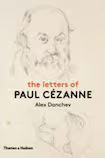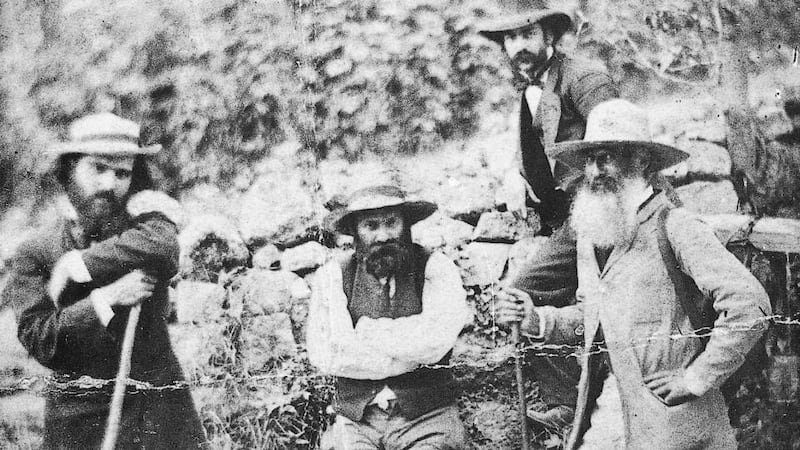
In his later years, the years when he wrote his best letters, the French painter Paul Cézanne did not cease to study and worry. He was solitary and difficult and as devoted to his art as a mystic might be to salvation. “I think the best thing to do is to work hard,” he wrote. For him, painting was the most exacting process. “He was,” Alex Danchev writes, “a thinker-painter of formidable penetration.” In April 1904, for example, two years before he died, he wrote to a young painter: “Treat nature by means of the cylinder, the sphere, the cone, everything brought into proper perspective so that each side of an object or a plane is directed towards a central point. Lines parallel to the horizon give breadth . . . Lines perpendicular to this horizon give depth. Now, we men experience nature more in terms of depth than surface, whence the need to introduce into our vibrations of light, represented by the reds and yellows, a sufficient quantity of blue tones, to give a sense of atmosphere.”
Every day, as Cézanne painted in the studio or went out into the landscape, he attempted to create a pictorial surface rather than re-create nature, but this did not, oddly enough, involve a repudiation of nature but implied a reverence for its intricate systems. He saw a world of subtle tonalities; everything contained its own shadow. “Shadow,” he said, “is a colour like light . . . Light and shadow are nothing more than a rapport between two tones.”
In this definitive volume of his letters, which is beautifully illustrated and with richly informative and sensible footnotes, Cézanne himself appears in a number of different tones. He is a young penniless artist afraid of his rich father, even more afraid when he begins a clandestine relationship with Hortense Fiquet and has a son with her. He is also the dreamy poet, writing to his close friend Émile Zola about his hopes as an artist and erotic fantasies, sending poems for the novelist to read, and outlining his secret adventures. (“For me, complete isolation. The brothel in town, or some other, but that’s all. I pay, the word is dirty, but I need some peace, and at this price I ought to get it.”)

He is also ambitious, measuring himself against his contemporaries. For example, he admires Pissarro ("all of us perhaps come out of Pissarro") and Monet ("the strongest of us all"), but he can also be dismissive ("I despise all living painters, except Monet and Renoir") and then deeply cantankerous ("All my compatriots are arseholes" – the French word here is culs – "beside me" or "Pissarro is an old fool, Monet is a wily bird . . . I'm the only one with temperament. I'm the only one who knows how to do a red!")
Literate and practical
Danchev's edition of the letters includes two letters from Hortense, who would later become Cézanne's wife, which make clear that she was both literate and practical, and some wonderful letters from Zola to Cézanne about the making of art ("In the artist there are two men, the poet and the worker. One is born a poet, one becomes a worker," or, "Look at Rembrandt: with ray of light, all his subjects, even the ugliest, become poetic.")
What emerges from Cézanne’s letters more than anything is his determination, his solitude, his seriousness and his eccentricity. Even though his work was being rejected by the Salon and mocked by the locals, he slowly built a reputation among dealers and critics. None of this seems to have bothered him much. In general he stayed in Provence, becoming a sort of legend in Paris. Danchev includes an extract from a letter written by woman to a friend in 1894, when Cézanne was 55: “Monsieur Cézanne is from Provence . . . When I first saw him he looked like a cut-throat with large red eyeballs standing out from his head in a most ferocious manner, a rather fierce-looking pointed beard, quite grey, and an excited way of talking that positively made the dishes rattle.”
Increasingly, Cézanne became a subject of fascination for Zola. As early as 1861, when Zola and Cézanne were still in their early 20s, Zola wrote to a friend: "He is made of one single piece, obstinate and hard in the hand; nothing can bend him, nothing can wring a concession from him." In 1886 Zola published a novel based on him. When Cézanne received the book, which is translated into English as The Masterpiece, he wrote Zola a very polite letter of thanks, and then, despite more than 30 years of friendship, he never spoke to Zola, or communicated with him, again. Zola's portrait of the artist as genius had him end in failure and suicide. The rift between the two men should be a lesson to all novelists and, indeed, all their friends.
Stab at 'modelling'
Despite the cantankerousness, there are wonderful, soaring moments in these letters, including Cézanne's observation to Pissarro from L'Estaque in July 1876 that "the sun is so fierce that objects seem to be silhouetted, not only in black or white, but in blue, red, brown, violet. I may be wrong but this seems to me the very opposite of modelling." In the earlier edition of Cézanne's letters, edited by John Rewald, we are left in the dark about what the term "modelling" might mean here. Danchev, God bless him, has a stab at explaining it. He writes: "Cézanne and Pissarro would lay down one plane or patch of colour next to another without any 'modelling' or shading between them." He then offers a colour illustration of a painting by Pissarro from 1867 that Cézanne admired for this very reason.
Cézanne was a voracious reader, familiar with the contemporary French novelists as with classical literature. While his life inspired Zola, the work itself began to intrigue novelists and poets. The brush strokes with the look of textured sentences, and Cézanne’s ability to paint a section of the canvas in great rich detail and then leave other sections undernourished or even blank, would interest writers such as DH Lawrence (“Sometimes,” Lawrence wrote, “Cézanne builds up a landscape out of omissions”) and Hemingway.
In a deleted passage in Hemingway's story Big Two-Hearted River, he wrote: "He wanted to write like Cézanne painted. Cézanne started with all the tricks. Then he broke the whole thing down and built the real thing. It was hell to do . . . He . . . wanted to write about country so that it would be there like Cézanne had done it in painting . . . He felt almost holy about it." Some of the most beautiful and perceptive writing about Cézanne's work was by the poet Rilke.
“The artist,” Cézanne said, “must avoid thinking like a writer.” By this I understand him to mean that the painter must avoid narrative in a picture, or taking sides, however briefly, for one tone against another, or offering moral truth or even ironies, or allowing mere feelings to interfere with a picture, including a portrait. It is perhaps for this reason that writers, who much of the time believe also that writers must avoid thinking like writers, have been so interested in Cézanne, and why his work and the legend of his life, as dramatised in these letters, have endured.










